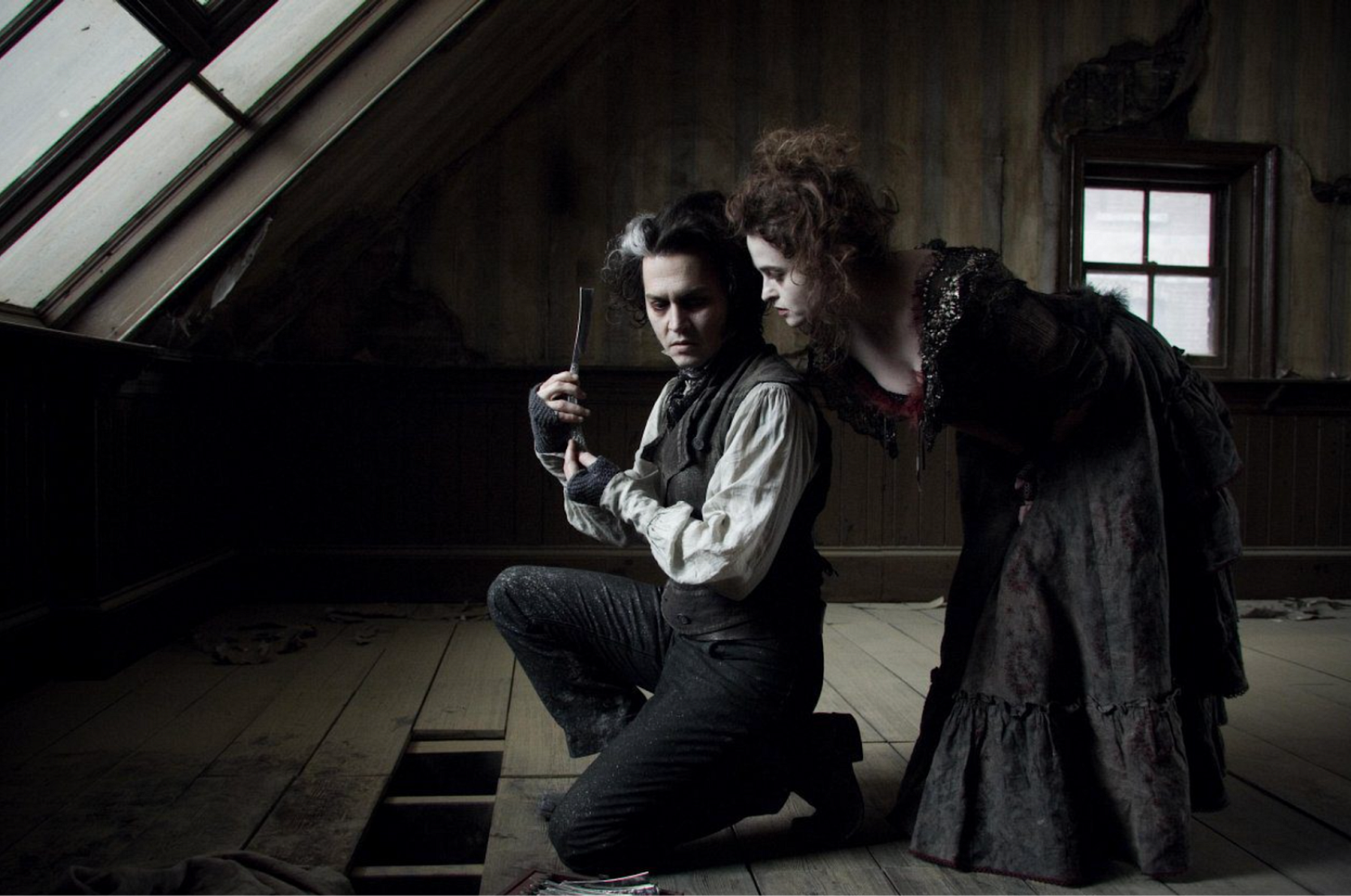Sweeney Todd: The Demon Barber of Fleet Street
Just deserts
Sweeney Todd may seem unlikely source material for one of the greatest American musicals, but frankly, musicals have always been weird: From the earliest productions such as The Black Crook, which involves deals with the devil and yearly human sacrifice, to more recent hits like Phantom of the Opera which features a musician living in the basement of an opera house for years until he decides to chase around a soprano. The point is that musicals, like any other form of art, are just another medium for telling an array of different stories. In the case of Sweeney Todd: The Demon Barber of Fleet Street (2007), the story is a blood-soaked parable on the folly of revenge.
For those unfamiliar with Stephen Sondheim and the enormity of his legacy, I envy that you get to discover his work for the first time. I recommend learning more about him through his obituary in the New York Times. I fear the Sond-heads (I don’t think that’s a real term) would lament anyone getting their first taste of Sondheim via Tim Burton’s pared down and gorey version Sweeney Todd, but I humbly submit that it’s a perfectly fine way to dig in. Depp and Bonham Carter may not reach the heights of Hearn and Landsbury, but Sondheim’s compositions shine through none-the-less.
The story follows Benjamin Barker, a London barber falsely imprisoned by the lecherous Judge Turpin (Alan Rickman). Many years later, he returns as Sweeney Todd (Johnny Depp), fueled by vengeance and grief over the wife and daughter stolen from him. With the help of Mrs. Lovett (Helena Bonham Carter), a baker with a failing meat pie shop and questionable morals, Todd sets up a barber shop above her kitchen and begins exacting his revenge—one unlucky customer at a time. The bodies don’t go to waste: Mrs. Lovett’s pies suddenly become a hit.
The beats of the story and the arcs of each character in Sweeney Todd are perfect. I often cite it as an example of perfect story-telling when rambling on with friends about what makes stories work. And Burton’s version of this story must be given credit for paring down the musical into its most essential story components. Gone are the large choral numbers, like The Ballad of Sweeney Todd, which serves as an overture sung by the entire cast. We’re left with are songs that could substitute as thoughts our characters have or sometimes share. Anthony (Jamie Campbell Bower) plans to steal Johanna (Jayne Wisener) and we learn this through the song Johanna. My Friends has Todd’s internal monologue regarding his plans for his newly rediscovered razors.
This paring-down makes the film the perfect entry point for the uninitiated. Each characters arc rises and falls with graceful precision. There are no loose ends, and every detail matters. A viewer could be forgiven for assuming the musical behaves like many musicals, in which characters enter and exit with little more purpose than the writer or composer added them in. In Sweeney Todd, it’s not until the end that you realize Sondheim and company have been weaving an evil web all along. It’s all connected and all the pieces matter. By the end, the razors have sung their song, and the film leaves a mark—sharp, stylish, and strange. It’s a musical for people who hate musicals, a (truly) bloody horror film for romantics, but above all, a tragedy. There are no just deserts.
Sweeney Todd: The Demon Barber of Fleet Street
Written by John Logan, Hugh Wheeler, and Stephen Sondheim; Directed by Tim Burton
2007
116 minutes
English
Recommended way to watch (at time of publication): Free on Hoopla with a public library card.

